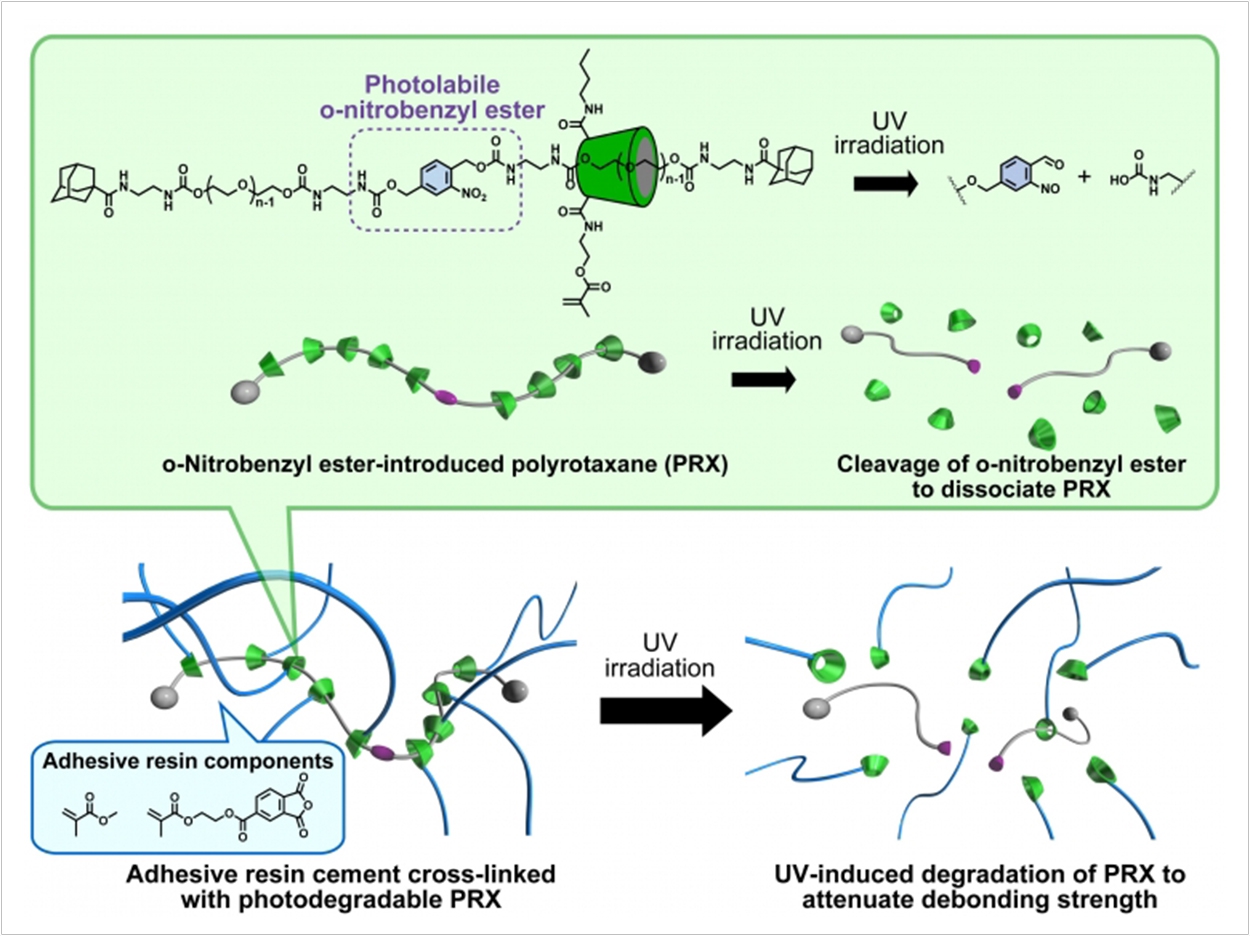
Researchers at Tokyo Medical and Dental University have developed a method of making dental materials easier to remove for short-term treatments that are not supposed to adhere to teeth indefinitely.
The removal of adhered materials during procedures such as orthodontic bracket repair often requires mechanical detachment that can damage tooth enamel. Efforts to improve removal processes have produced materials weakened by triggers such as heat or electric currents.
However, approved sources of these stimuli are not readily available in standard dental clinics. The researchers, then, focused on ultraviolet (UV) light-responsive materials that can be triggered by UV sources widely used by dentists to cure resin cements and composites.
The toughness of many dental cements is a result of mixing them with a cross-linker that locks the cement molecules to each other to form a stable network. The researchers have introduced a chemical “switch” into a new cross-linker than opens when UV light is shined on it.
“The cross-linker structure resembles rings threaded onto a piece of string with bulky stoppers at each end,” said lead author Atsushi Tamura.
“We have added a section to the string, an o-nitrobenzyl ester group, that breaks under UV light, causing the rings to slide off. This has a significant effect on the stability of the cement material the cross-linker is holding in place,” Tamura said.
The researchers used their cross-linker to stabilize a commercially available resin cement that was used to stick two polymer blocks together, or to attach a polymer block to a bovine tooth.
After shining UV light on the cross-linked cement for just 2 minutes, the cement showed a significant reduction in adhesion strength in both tests, meaning separation of the bonded materials was easier following UV treatment.
“We are very encouraged by the initial findings using our cross-linker,” said corresponding author Nobuhiko Yui.
“Although the UV wavelength used to disrupt the material was not clinically appropriate in this case, we intend to develop the chemistry of our internal switch so that it can provide a facile and readily accessible method of removing adhesives in the clinic,” Yui said.
The study, “Light-Embrittled Dental Resin Cements Containing Photodegradable Polyrotaxane Cross-Linkers for Attenuating Debonding Strength,” was published by ACS Applied Polymer Materials.
Related Articles
Harvard Licenses Tough Gel Adhesive Technology to Amend Surgical
Antibacterial Nanoparticles Improve Adhesive Resins
Adhesive Prevents Tooth Decay Around Orthodontic Brackets












